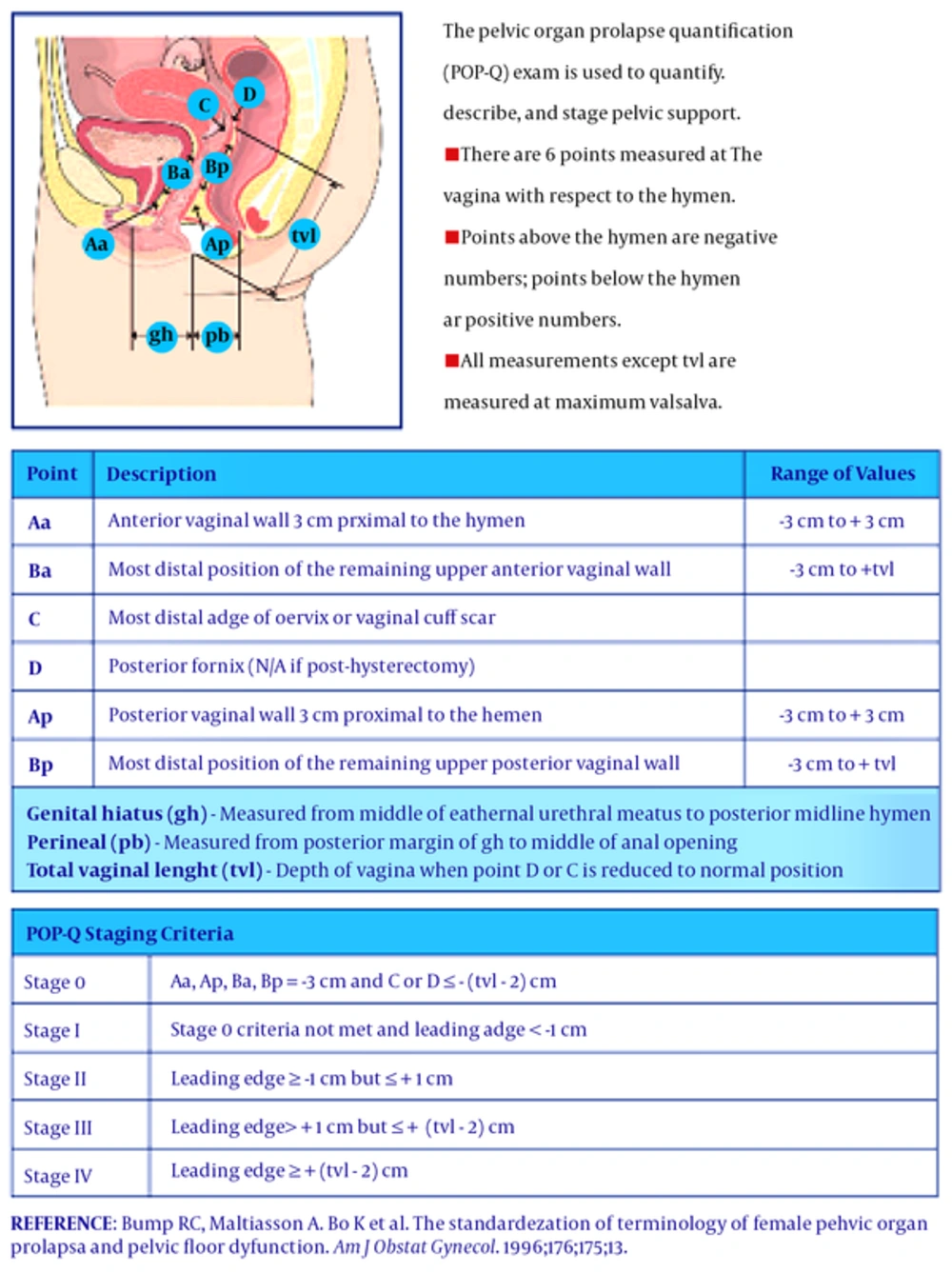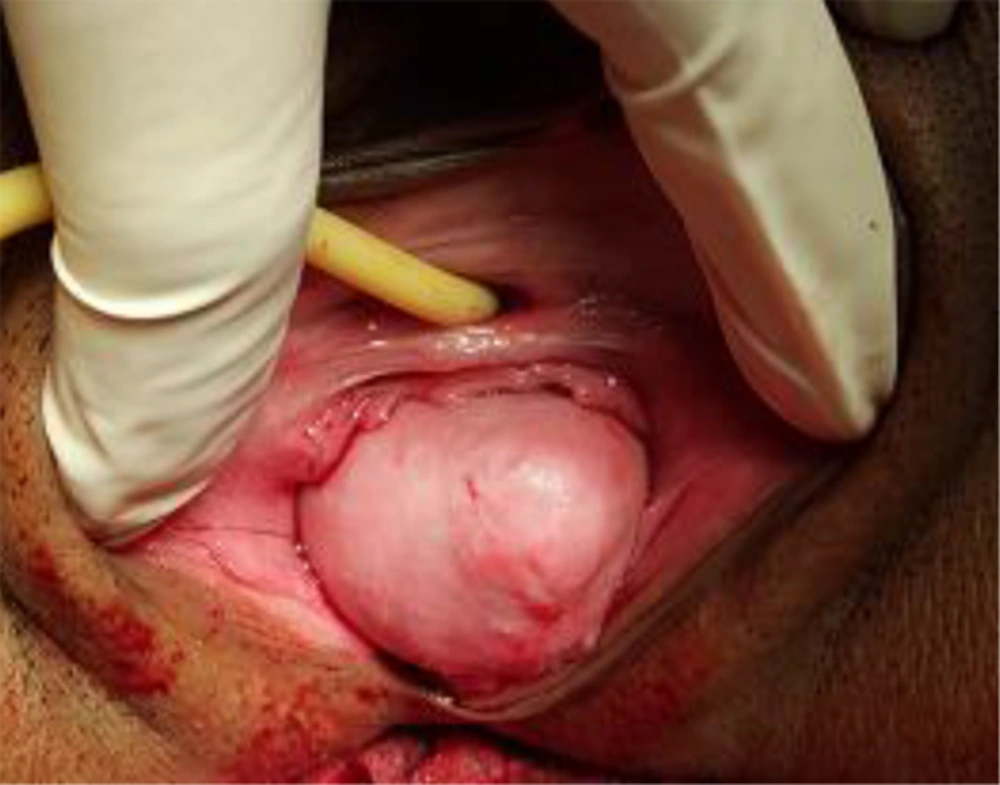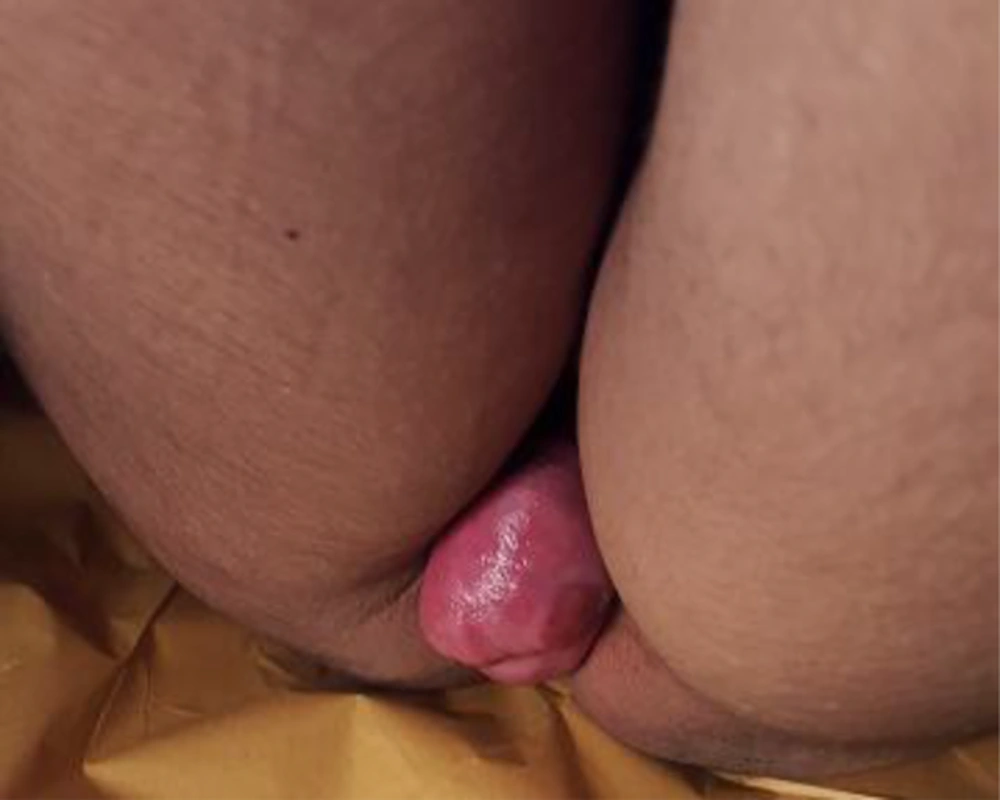1. Introduction
Uterine prolapse refers to the downward displacement of the vaginal apex. The vaginal apex is either the uterus or cervix or in women who have done supracervical or total hysterectomy, the cervix or vaginal cuff (1). Another classification of pelvic organ prolapse (POP) is including: Cystocele, Rectocele, Entrocele, Apical compartment prolapse or uterine prolaple (our case), Uterine procidentia (1). This condition is made by stretching and weakening of connective tissues, Muscles and neural defects.
Risk factors for POP include high parity,advancing age and obesity (1). Women with POP were assessed using POP-Quantitation system (Figure 1). There arennot any symptoms in women with mild uterine prolapse based on POP-Q system. Although pregnant women may present with new symptoms or an exacerbation of POP during pregnancy. Moderate and severe uterine prolapse may produce symptoms such as: (1)
- Feeling like sitting on a ball
- Vaginal bleeding or vaginal discharge
- Sexual Problems
- Protruding of the uterus or cervix from the vagina
- Heavy feeling in pelvis
- Constipation or obstipation
- Recurrent cyctitis
Causes of uterine prolapse in multiparouse women is truma to muscles (levator ani, superficial and deep perineal muscles) and ligaments (Cardinal and Uterisacral ligaments) during pregnancy and delivery that lead to prolapse. Risk of surgery due to POP is after first (fouthfold) and second birth (eightfold) and then increased less rapidly for next births (third; ninefold and forth; 10fold) (1). However risk of POP after vaginal delivery is greater than cesarian section
2. Case Presentation
This study is about a 33- year-old Iranian (balouch lady) G5P4L4 who was reffered to the maternal ward of Emam Ali hospital of Zahedan city in the 35 weeks and 3 dayes of gestation with uterine prolapse and labor pain. Vaginal exam of the patient was dilatation 3 - 4 cm, Effacement 40%, Presentation part, Cephalic, Station, -3 and Amniotic sac, Intact. Laboratory investigations were normal. First delivery in this patient was after 39 weeks without any uterine prolapse and NVD, Second delivery was in 25 years old with Normal vaginal delivery without any information of POP from side of patient. The third and fourth were like the two pervious cases at 39 - 40 weeks. During fifth pregnancy she was without regular prenatal care (PNC) and experienced urinary incontinence and heaviness and moderate to high grade uterine prolapse (POP) after 30 weeks. She had tolerated this prolapsed. So after increasing the grade of prolapse and starting of labor pain, she came to maternal ward. There was a complete prolapse based on PAP-Q system. The Auther prepared her to CS with normal lab analysis and performed emergency cesarean section and was born a baby boy with 2150 g and Apgar score 10/10. She was discharged 2 days later healthy and requested her to come back after 2 weeks.
3. Discussion
Uterine prolapse as the common gynecologic problem is the descent of uterus, cervix or vaginal cuff. Pelvic organ prolapse (POP) affects millions of women (1), but this problem is rarely during pregnancy and this study has shown pregnant woman with uterine prolapse in Figures 2 and 3. Primary litratures (before 1970) has not determined the exact grade of prolapse but muliparous women were more common in the classification of uterine prolapse (Apical compartment prolapse) using the POP-Q evaluation (2, 3).
Multiple factors are usually involved in the production of uterine prolapse but the most prominent cause is pregnancy, or difficult delivery. However, it may also occur spontaneously, although very rarely, even in nulliparous women. In this study, The patient was grand multiparous (5th multiparous) and low culture and education and had have difficult delivery at home as well as poor PNC in past pregnancies and last pregnancy. If the patient had good PNC, she could receive pessary at low grade prolapse based on POP-Q system.
Pelvic floor muscle training (PFMT), Estrogen therapy and vaginal pessary are conservative management as the first line option for POP. And they reduce complications correlated with this condition. Complications such as recurrent cystitis, vaginal bleeding due to cervical ulceration, vaginal discharge, urinary retention, abortion, pre-term labor and even maternal death have been described (3). In an article recommended a vaginal pessary application during the first six months (2, 4). The Auther observed some of these complications like cervical ulceration with light symptoms of heaviness without pelvic pain. Although in a recent report, Eddib et al. managed a similar case with a vaginal delivery, As was said in all of the paperts, the auther also believes elective caesarean section near term because could be the safest delivery method in order to avoid a progression of the prolapse grade and uterine rupture or trauma (4)
In conclusion, natural pregnancy during uterine prolapse is possible and the management of uterine prolapse during labor should be done based on grade of the POP, Gestational age, Parity (5, 6).
A vaginal delivery can be done, but according many litratures, an elective caesarean section near term could be as a safe delivery option (7).


